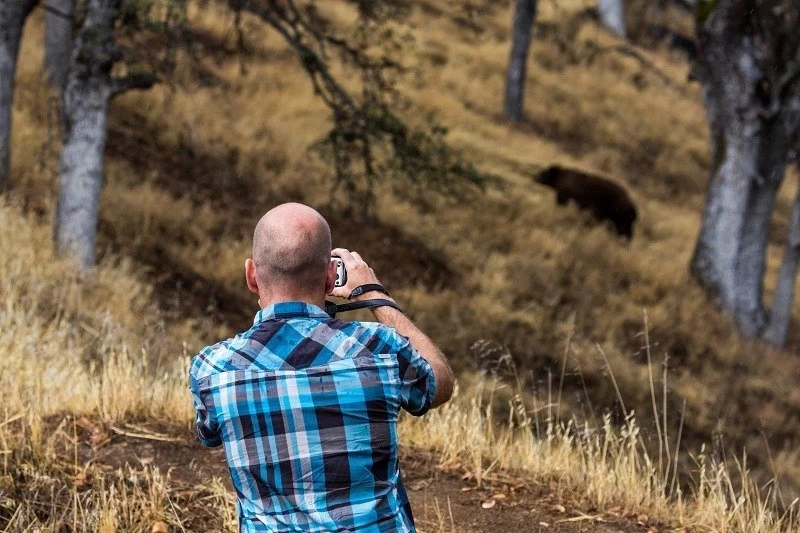
How to Plan a Trip to See Wildlife in US National Parks Responsibly
- 1 - choose-when-and-where
- 2 - permits-lodging-transport
- 3 - respectful-viewing-distances
- 4 - photography-with-a-conscience
- 5 - routes-guides-and-local-knowledge
- 6 - safety-and-wildlife-awareness
- 7 - real-trip-stories-to-learn-from
- 8 - how-refined-travel-helps
1. Choose When and Where: Matching Species to Seasons
1.1 Map your dream sightings to specific parks
“How to plan a trip to see wildlife in US national parks responsibly” starts with a species-first mindset. If you want grizzlies and wolves, think Yellowstone and Grand Teton; for elk bugling and bighorn sheep, consider Rocky Mountain; for desert bighorns and roadrunners, try Joshua Tree; for manatees (outside the NPS but often paired with park trips) and alligators, consider Everglades and nearby refuges. Each ecosystem concentrates different encounters, so aligning your destination with the animals you hope to see is the first responsible decision—fewer miles, less stress on habitats, better outcomes for both parks and travelers.
1.2 Time your arrival to natural cycles
Spring brings ungulate calves in Yellowstone and bear activity as they emerge from dens; late summer in Katmai (a national park & preserve in Alaska) or coastal brown bear territories coincides with salmon runs; fall delivers elk rut choruses in Rocky Mountain and pronghorn migrations in Grand Teton; winter reveals wolf tracks on snowy valleys in Yellowstone’s Lamar. Planning around these cycles increases your chances without chasing or crowding wildlife—patience beats proximity.
1.3 Balance crowd levels and conservation closures
Many parks now use timed-entry or area-specific closures to protect dens, nesting sites, or restoration zones. Shoulder seasons (late April–May, September–October) keep encounters magical while minimizing your footprint. Build flexibility into your itinerary in case weather, fire, or wildlife protections temporarily close roads or trails.
2. Permits, Lodging, and Low-Impact Transport
2.1 Reserve early and read the fine print
Popular wildlife corridors—like Yellowstone’s Hayden and Lamar Valleys—book out months in advance. Campsites, backcountry permits, and shuttle seats for vehicle-restricted canyons can disappear quickly. Responsible planning means securing official permits, honoring area quotas, and avoiding overflow parking that crushes vegetation.
2.2 Sleep where the animals already are—without disturbing them
Lodging near prime habitat reduces dawn driving and emissions. Choose in-park lodges or gateway towns with shuttle access. Keep camps food-secure: store all scented items in bear boxes where provided. A quiet campsite is a responsible campsite—no food scraps, no wildlife habituation.
2.3 Use shuttles and scenic pullouts
Many parks operate shuttles that reduce traffic in sensitive areas. When driving, use designated pullouts, never block lanes for a photo, and skip mid-road stops that create dangerous “wildlife jams.” The best sightings often happen when you’re patient at a single pullout at dawn or dusk.
3. Respectful Viewing Distances and Behavior Basics
3.1 Follow species-specific space
A practical rule most visitors can remember: at least 25 yards (about 23 meters) from elk, bison, bighorn sheep, deer, and other large mammals; at least 100 yards (about 91 meters) from bears and wolves. For nesting birds and raptors, give extra berth—disturbance can cause nest abandonment. If an animal changes behavior (stops feeding, fixes on you, moves away), you’re too close.
3.2 Let the animals set the scene
Never call, whistle, or toss food to lure an animal closer. Do not mimic predator calls or fawn bleats; these behaviors condition wildlife and can trigger stress responses. Keep pets leashed and outside critical habitats to protect both wildlife and your companion.
3.3 Stay on durable surfaces
Step off cryptobiotic soils or fragile tundra and you may erase decades of growth in minutes. If you must leave a trail to reach a designated viewing area, stick to rock, sand, or well-compacted ground.
4. Photography with a Conscience: Getting the Shot the Right Way
4.1 Use focal length, not your feet
Wildlife photographers rely on 300–600mm lenses so animals never notice them. If you’re using a phone, stabilize on a pullout railing, use optical zoom where available, and accept that some scenes are for the mind’s eye. Responsible photography means no drones in national parks—they disturb wildlife and are prohibited.
4.2 Natural light and quiet timing
Blue hour and golden hour coincide with peak animal movement. Silence camera beeps and avoid flash that can startle nocturnal species. Pack a beanbag or compact tripod for sharp images from legal pullouts.
4.3 Caption with context
When you share images, include natural-history context: species, distance observed, habitat. Social storytelling can nudge your followers toward safer, more respectful practices.
5. Routes, Guides, and Local Knowledge
5.1 Build wildlife corridors into your route
Plan slow cruises along proven corridors: Yellowstone’s Lamar at sunrise, Cades Cove loop in Great Smoky Mountains (on vehicle-free mornings when offered), Santa Elena Canyon overlooks in Big Bend for raptors, Point Reyes headlands for tule elk. One thoughtful corridor at dawn and one at dusk outperforms frantic park-hopping.
5.2 Consider certified naturalist guides
Guides read wind, tracks, and alarm calls like a language. They also help you keep proper distances and interpret behavior—why a bison herd suddenly bunches, or how ravens signal a wolf cache. A half-day with a guide can recalibrate your entire week.
5.3 Use ranger programs and sightings boards
Evening ranger talks teach migration timing, denning areas, and current closures. Visitor centers often keep wildlife reports—use them to plan ethical opportunities, not to chase sensitive species.
6. Safety, Gear, and Leave No Trace in Practice
6.1 Prepare like a naturalist
Pack layered clothing, red headlamp mode for pre-dawn approaches, and insulated mugs so you can linger quietly. Binoculars (8x–10x) make distant behavior engaging; a field guide elevates identification into understanding.
6.2 Bear-aware in carnivore country
Carry bear spray where recommended and know how to use it. Hike in groups, make conversation in brushy or noisy creeks, and keep packs closed so scents don’t escape. If you encounter a bear at distance, enjoy it—if close, speak calmly, back away slowly, and give space.
6.3 Waste nothing, tempt no one
Pack out every crumb, including orange peels and pistachio shells. Microtrash habituates ravens, jays, and ground squirrels, which then raid nests and alter ecosystems. Your snack discipline helps predators and prey you may never see.
7. Real Trip Stories to Learn From
7.1 The sunrise that changed a plan
On a frosty May morning, a couple parked at a quiet Lamar pullout and watched a valley wake: sandhill cranes bugled, bison calves kicked, and a distant grizzly sow grazed willow flats. They never left the pullout—no crowd, no rush—yet logged their best sightings of the week because they let the landscape unfold on its own clock.
7.2 The wolf track lesson
In January, a small group with a naturalist noticed magpie chatter and fresh tracks skirting a frozen creek. They stayed put, scanning patiently. Ten minutes later, a gray wolf trotted into view across the valley, oblivious to the respectful audience. The story became their favorite not because of proximity, but because restraint paid off.
7.3 The photo they chose not to take
Near a Yellowstone turnout, a young bison wandered toward parked cars. One visitor stepped forward; another gently reminded them of the 25-yard guideline. Everyone backed up, the bison passed, and the moment became a shared memory about choosing ethics over likes.
8. How Refined Travel Curates Responsible Wildlife Adventures
8.1 Itineraries that prioritize animal welfare
Refined Travel designs routes around seasonal behaviors—elk ruts, seabird nesting, tidepool lows—so you witness wildlife naturally rather than seeking close contact. The result is better viewing with a lighter footprint.
8.2 Expert-vetted guides and lodges
We partner with outfitters who follow strict viewing distances, teach natural history, and limit group sizes. Lodges are chosen for transit access and conservation commitments, from dark-sky compliance to habitat restoration.
8.3 A gentle nudge toward action
If you’re ready to turn responsible plans into real encounters, explore tailored plans with Refined Travel. We help you secure permits, time each corridor, and align your wish list with ethical opportunities—so the wild stays wild for your next visit, and for everyone else’s.







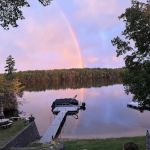 Pawtuckaway State Park Office4.0 (5 reviews)
Pawtuckaway State Park Office4.0 (5 reviews) Greenlawn Estates3.0 (86 reviews)
Greenlawn Estates3.0 (86 reviews) Oak Creek RV and Mobile Home Park2.0 (43 reviews)
Oak Creek RV and Mobile Home Park2.0 (43 reviews)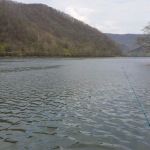 Bass Lake Park3.0 (17 reviews)
Bass Lake Park3.0 (17 reviews)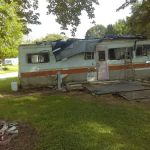 Green Meadows Mobile Home Park2.0 (31 reviews)
Green Meadows Mobile Home Park2.0 (31 reviews)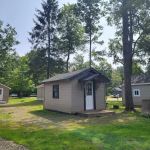 Higby's Campground Office4.0 (139 reviews)
Higby's Campground Office4.0 (139 reviews) Exclusive Travel Packages for First-Class Travelers: A Guide to Luxury Vacations
Exclusive Travel Packages for First-Class Travelers: A Guide to Luxury Vacations Refined Travel Experiences in Southeast Asia: Explore Luxury & Unique Destinations
Refined Travel Experiences in Southeast Asia: Explore Luxury & Unique Destinations How to Make the Most of Luxury Vacation Deals: Expert Tips for Savvy Travelers
How to Make the Most of Luxury Vacation Deals: Expert Tips for Savvy Travelers How to Enjoy a Refined Travel Experience in the Mountains
How to Enjoy a Refined Travel Experience in the Mountains Refined Travel Itineraries for Art and Culture Lovers: Explore the World of Art and History
Refined Travel Itineraries for Art and Culture Lovers: Explore the World of Art and History Most Luxurious Destinations for Honeymooners: Top Spots for Romance and Luxury
Most Luxurious Destinations for Honeymooners: Top Spots for Romance and Luxury